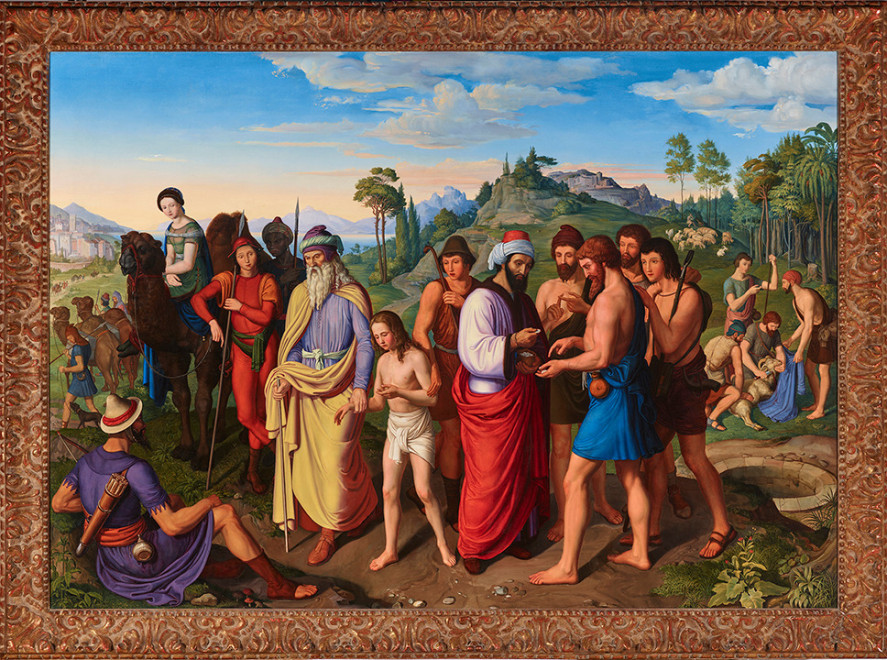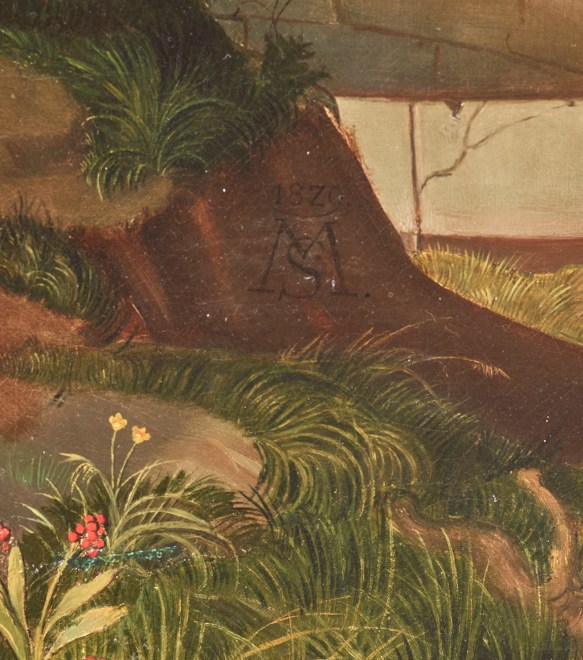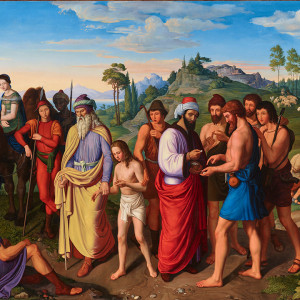Provenance
Private collection, Austria
Sale, Christie’s, Vienna, Mauerbach, Items Seized by the Nazis to be Sold for the Benefit of the Victims of the Holocaust, 29 & 30, October 1996, lot 519
Edmond Safra for Republic National Bank (acquired at the above sale)
Sale, Sotheby’s, New York, 26 October 2004, lot 62
Private collection, California (acquired at the above sale)Exhibited
Munich, Kunstausstellung, 1829Literature
Shorn’s Kunstblatt, Munich, 19 November 1829, no. 93, p. 371
Georg Kasper Nagler, Neus Allegemeines Kimstlet-Lexicon, Leipzig: Schwarzenberg & Schumann, 1921, vol. 16, p. 224
Friedrich von Boetticher, Malerwerke des Neunzehten Jahrhunderts, Hofheim am Taunus, Dresden, Boetticher, 1974, vol. II, no. 1, p.733
Catalogue note
Alexander Maximilian Seitz (1811-1888) was already the third generation of a productive Bavarian artist family. Merely 12 years old, he enrolled at the Munich Academy of the Arts, where he studied under Peter Cornelius (1783-1867) and Heinrich Hess (1798-1863), who immediately took a shining to his precocious pupil. Subsequently, Seitz began to assist his mentor in 1832 with the mural decorations of Munich’s All Saints church. Built between 1826 and 1837 after plans by Leo von Klenze, the court church was frescoed, to international fanfare,in a neo-Byzantine style. Seitz designed and painted four of the sacraments (Baptism, Confirmation, Confession and Matrimony), the cartoons of which he exhibited, again with great success, at the local art show. Upon completion of the frescoes, Seitz’s contribution caught the eye of Cornelius, who now took it upon himself to intervene personally with King Ludwig I on behalf of the young artist. Cornelius was successful and with the king’s permission and patronage too the young disciple departed for Rome. The journey to the Eternal City would change Seitz’s life and art forever. The Bavarian settled at the Tiber for good and remained in Rome until his death. Not a household name, Seitz was a prolific and well-received artist, who in later years successfully collaborated with his son Ludwig (1844-1908) on various projects, among them a volume with 48 scenes from the life of Christ and the saints (published in 1872).
Like so many artists of his generation and disposition, Seitz felt particularly attracted to the art and persona of Johann Friedrich Overbeck (1789-1869), whom he regarded as a kindred spirit. Nothing demonstrates the shared spiritual and artistic sensibility more poignantly thanSeitz’s first major success; a rendition of Joseph being sold into Slavery by his Brothers (Genesis 37:18-36). Submitted in 1829 to the Munich art exhibition, the ambitious, multi-figured composition brought the merely eighteen-year-old instant recognition.
The choice to depict this particular Old Testament theme was a conscious homage to his teacher, Cornelius, and to the moment when the Munich master and his Nazarene cohort (the so-called Lukasbund or Brother of St. Luke) had turned from rebellious outsiders to internationally recognized trendsetters a decade and a half earlier (see Figs. 6-8). I have discussed the circumstances of this breakthrough in the text, and thus it may suffice here to remind the reader of the event’s basic outlines: In 1816, the originary nucleus of this branch of Romantic art had finally received the long-awaited commission for substantive mural decorations. The locale was the banqueting room of the Prussian envoy, Jakob Ludwig Salomon Bartholdy (1779-1825), who had taken residence in the Palazzo Zuccari, near the Spanish Steps. Free to choose their subject matter the artists decided on the Old Testament story of Joseph. The work was not easy; inexperienced, the group struggled with the unfamiliar medium and failed-despite their constant rhetorical evocation of their unified vision as an artists collective—to develop a cohesive style. In the end, the panels were quite independent of each other, differing in style and compositional principles, as well as the figures’ scale, perspective and light distribution. These inconsistencies notwithstanding, the result was breathtaking and remained a must-see until the frescoes’s transfer to Berlin in 1886-1887. Looking back, Peter Cornelius would later proclaim, “This work makes me the happiest of people, and even if I only had one crust of bread left, I would not change it ... . In my breast, there beats a sure, prophetic feeling that art will break through from here to a new, beautiful existence.” Interestingly enough, though, Seitz did not turn to Cornelius’s emotionally intense images and compositionally gripping depictions of Joseph Interpreting the Pharaoh’s Dream and Joseph Revealing Himself to His Brothers, which many regarded as the cycle’s finest. Instead, he was drawn to the much quieter, much more introvert rendition of another key scene, The Sale of Joseph into Slavery by his Jealous Brothers, which showcased Overbeck’s spiritual lyricism, tinged with an early Renaissance sensibility and sense of color (see Fig. 7).
Of course, at this point, Seitz had seen neither in person. Instead, he resorted for his early oil painting to a black-and-white model: the masterful lithography by the Swiss Hans Jacob Oeri(1782–1868). Produced after Overbeck’s 1817 cartoon drawing, Oeri had published his coveted print only three years earlier, in 1826, (Cat. 14a). In the process of making Overbeck’s idea his own, Seitz now did not so much copy the older artist than pay homage. The figures and groups lifted from Overbeck’s composition take on a citational quality, while Seitz rearranged them into a new narrative layout and sometimes, as in the case of the young man leaning on his spear, even turned them in space. Instead of looking over his shoulder, the spear-bearer is now facing us frontally. In addition, Seitz allocated much more space to the landscape, while adding a much richer tonality that the frescoes could have ever achieve. We almost see Seitz’ painting opening a devoted and devotional conversation with his model, Overbeck’s canvas, and it is hardly surprising that this conversation would turn into a lifelong bond when Seitz finally met his idol. When Overbeck’s strength began to decline decades later and the former Lukasbruder was no longer up for the task of monumental fresco, Seitz would come to his rescue. With the aid of his son Ludwig, he finished what Overbeck had begun: the mural decorations of the main cathedral in Djakovo, Croatia. And thus, the Nazarenes’ story came full circle.






